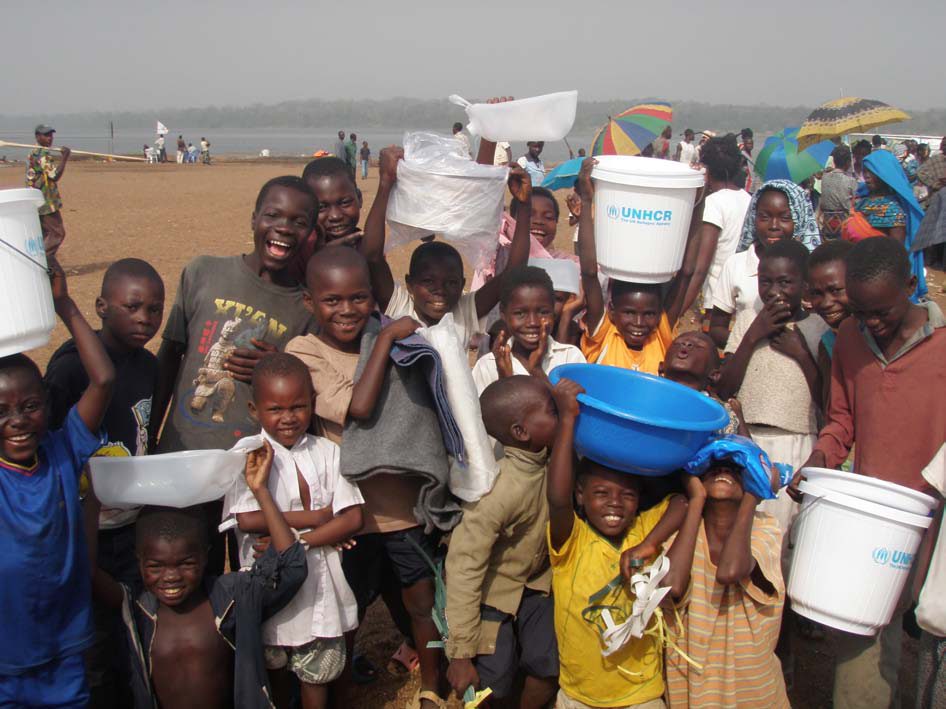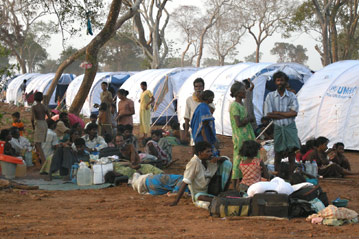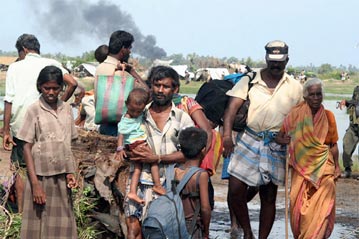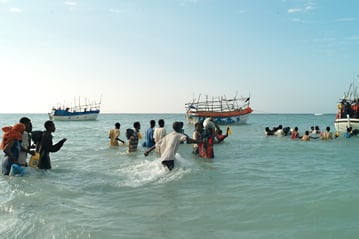Post-tsunami recovery in Puntland, Somalia, shifts from relief to development
Post-tsunami recovery in Puntland, Somalia, shifts from relief to development
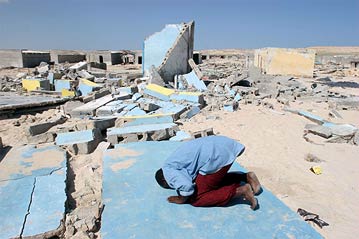
NAIROBI, Kenya, December 16 (UNHCR) - Discouraged by season after season of drought, many herdsmen in north-east Somalia abandoned their dying flocks, trekked east and took up fishing off the Indian Ocean coastline, eking out a modest living to support their extended families inland.
Then tragedy struck. The tsunami generated by last December's Asian earthquake surged all the way across the Indian Ocean to the Horn of Africa, sweeping fishing boats and nets out to sea and wiping out entire villages in what was already one of the world's poorest countries.
A year on, UNHCR, other UN agencies and partners from non-governmental organizations are making the leap from providing emergency aid - food, plastic sheets, blankets and the like - to investing in development projects that should leave a 650-km stretch of Somali coastline better off than it was before the tsunami struck.
"The recovery efforts have already helped to bring the region back to its pre-tsunami conditions," says Ivana Unluova, Programme Officer for UNHCR's Somalia programme, which is based in Nairobi. "Now longer-term development programmes are being prepared and initial projects are already being implemented.
"For example," she adds, "lack of access roads has been a big hindrance to development, and now we are building roads that will link the hinterlands with the coast and make economic growth possible. And in some communities, the communal facilities we are building will be the first these communities have ever had."
The UN's efforts are concentrated in a stretch between Hafun and Garaad in north-east Somalia, an area also known as Puntland. Although war-ravaged Somalia has limped along for years without a central government, Puntland is a relatively safe self-declared autonomous enclave with a functioning government.
"Because of its productive potential, helping the coastal region of Puntland and its related hinterland emerge from the cycle of economic stagnation and social deprivation will go a long way in promoting development, not just in the affected area but in a much wider section of Somalia," Unluova added.
Hafun, originally built some metres below sea level on a peninsula, was the area worst hit by the tsunami. All of the roughly 800 buildings on the seafront were totally destroyed, or damaged beyond repair.
Along the whole 650-km stretch, some 45,000 Somalis were estimated to have been affected by the tsunami. In a country devastated by nearly 15 years of civil unrest, there was no reliable system to record the number of deaths, but estimates ran as high as 150 or 200 dead.
The UN refugee agency has nearly finished distributing 15,000 plastic sheets, 45,000 blankets, 18,000 sets of cooking pots and kitchen utensils, 19,000 jerry cans and 35,000 sleeping mats.
"The humanitarian emergency response by the UN country team, including UNHCR, has gradually shifted from emergency response to recovery and rehabilitation and, where feasible, towards development," says Unluova. "These projects were implemented under an integrated approach where agencies brought their resources together to maximize the benefits and minimize the costs."
In devastated Hafun, a "new Hafun," set back 500 metres from the sea, is rising from the rubble. UNHCR, working through a Somali NGO and according to an urban plan laid out by UN Habitat, has constructed a Women's Resource Centre - where women can meet and discuss their problems and receive advice - and a covered market in the town.
UNHCR projects - costing $296,000 in all - are going on in other locations: a garbage collection system for Bender Beyla; reconstruction of the only secondary school in Eyl, a new market and a women's centre for Garaad, as well as access roads to Jeriban, to allow delivery of aid and help spark development.
"The women's centres, in particular, should help improve the well-being of Somali women along the coast, and should serve as a catalyst for women to assume greater responsibility in their social, political and economic lives," says Unluova, who has been deeply involved in UN efforts to help tsunami-affected areas of Somalia first recover and then develop.
As for the other UN projects, some of which have just begun, "their impact, combined with the start of the fishing season in October, is beginning to be felt in Puntland," says Unluova. "For thousands of people, the misery brought by the tsunami has started to lift."
By Kitty McKinsey in Nairobi, Kenya

